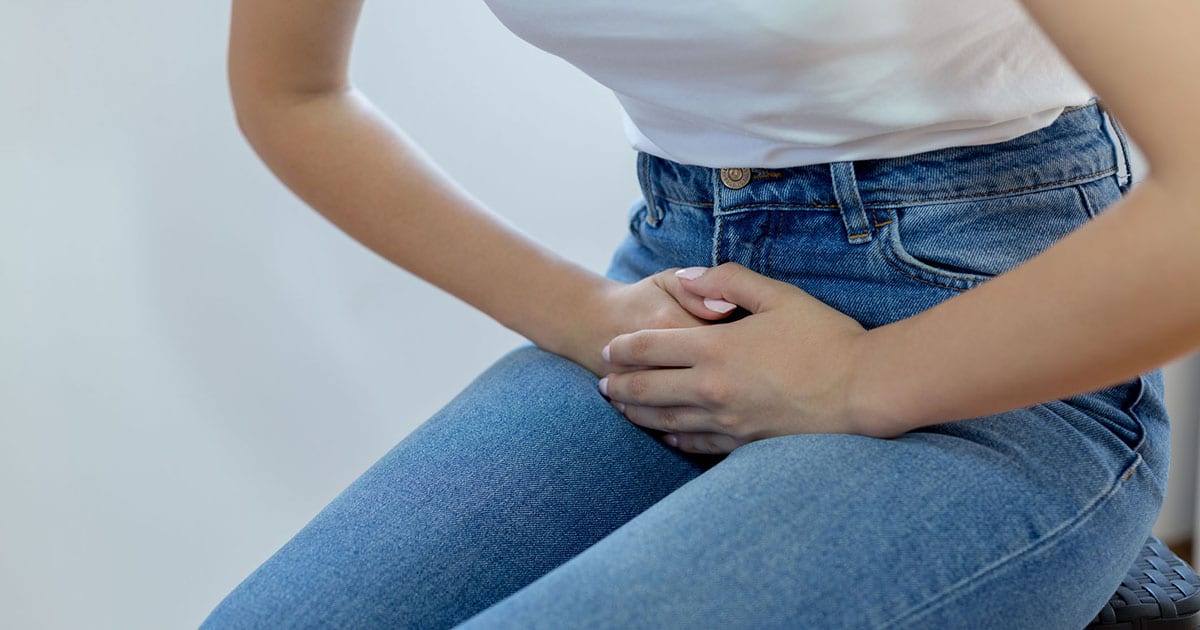Urge urinary incontinence (UUI) is preceded by a sudden need to pass urine that cannot be controlled. If the bladder is full, this can lead to a big and embarrassing leak. This can be especially bothersome as it may be quite unpredictable.
Urge Urinary Incontinence
Urge Urinary Incontinence
Urge urinary incontinence (UUI) is preceded by a sudden need to pass urine that cannot be controlled. If the bladder is full, this can lead to a big and embarrassing leak. This can be especially bothersome as it may be quite unpredictable.

Symptoms
UUI occurs when the muscle wall of the bladder squeezes when it shouldn’t, and the pelvic floor is unable to react in time to prevent urine leaking out.
Some women have what is known as an ‘overactive’ bladder. In this situation, you need to go more often, go at night, and need to rush to get to the toilet. This can sometimes be associated with leakage.
These symptoms seem to be more common after menopause, when estrogen levels in the pelvis get lower, but can affect younger women as well.
Some women find the symptoms are worse in cold weather, when they can hear running water, or just as they get home or to work.
Caffeine may make the bladder more ‘sensitive’, and you may find simply cutting back on tea and coffee makes a big difference.
Treatment
It is important to make sure there are no signs of infection, or rarely cancer of the bladder, before starting any treatment for an overactive bladder.
The treatment usually involves identifying any triggers, providing some estrogen (as a cream) if past menopause, and physiotherapy to strengthen the pelvic floor muscles and learn techniques to help resist the urge to go so often.
Some women also use medications that help to reduce the number of spasm episodes. Common medications include oxybutynin (Ditropan), solifenacin (Vesicare) and tolterodine (Detrusitol). All can have side effects such as dry mouth, constipation, blurry vision and acid reflux. You can’t use these medications if you have glaucoma.
In most cases it is a combination of treatments that help reduce the number of episodes of leakage.
Occasionally these symptoms can be found with a prolapse of the bladder, although just fixing the prolapse may not cure the symptoms and non-surgical approaches should be tried first. Sometimes lifting the prolapse with a pessary can give a good idea of how likely it is that surgery would fix the issue.
We can help
If you think you may have UUI and would like to talk to us about how we can help, please feel free to contact us. You can also request an appointment online.
UUI occurs when the muscle wall of the bladder squeezes when it shouldn’t, and the pelvic floor is unable to react in time to prevent urine leaking out.
Some women have what is known as an ‘overactive’ bladder. In this situation, you need to go more often, go at night, and need to rush to get to the toilet. This can sometimes be associated with leakage.
These symptoms seem to be more common after menopause, when estrogen levels in the pelvis get lower, but can affect younger women as well.
Some women find the symptoms are worse in cold weather, when they can hear running water, or just as they get home or to work.
Caffeine may make the bladder more ‘sensitive’, and you may find simply cutting back on tea and coffee makes a big difference.
It is important to make sure there are no signs of infection, or rarely cancer of the bladder, before starting any treatment for an overactive bladder.
The treatment usually involves identifying any triggers, providing some estrogen (as a cream) if past menopause, and physiotherapy to strengthen the pelvic floor muscles and learn techniques to help resist the urge to go so often.
Some women also use medications that help to reduce the number of spasm episodes. Common medications include oxybutynin (Ditropan), solifenacin (Vesicare) and tolterodine (Detrusitol). All can have side effects such as dry mouth, constipation, blurry vision and acid reflux. You can’t use these medications if you have glaucoma.
In most cases it is a combination of treatments that help reduce the number of episodes of leakage.
Occasionally these symptoms can be found with a prolapse of the bladder, although just fixing the prolapse may not cure the symptoms and non-surgical approaches should be tried first. Sometimes lifting the prolapse with a pessary can give a good idea of how likely it is that surgery would fix the issue.
If you think you may have UUI and would like to talk to us about how we can help, please feel free to contact us. You can also request an appointment online.
Related Conditions & Treatments
Related Conditions & Treatments
Teamwork
We all have a variety of expert skills and clinical knowledge – we work together and with our patients to achieve their treatment goals.
Up-to-date technology
We are up-to-date in terms of technology and modern methods of investigation and treatment, and continue to maintain this level of advanced service.
Minimal approach
We have the ability and expertise to manage surgical procedures using minimal access approaches. This includes using keyhole surgery wherever possible.
